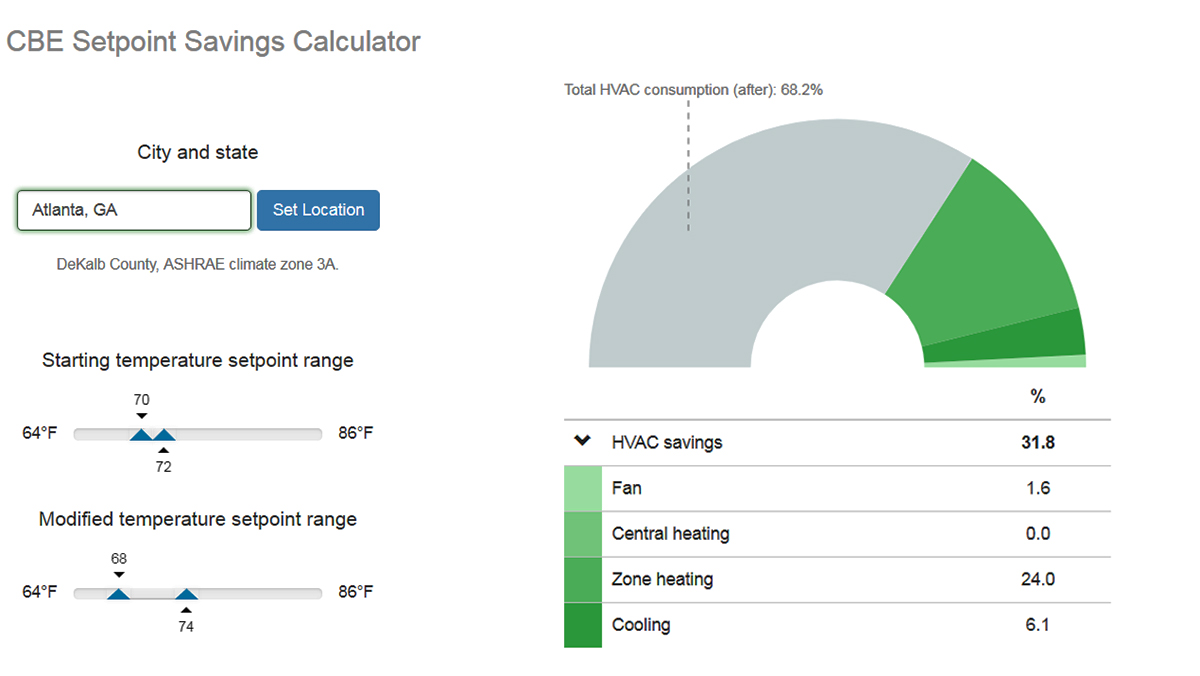An online tool for fast energy saving estimations of expanded temperature ranges.
Status: Completed
Funding Sources: CBE Energy Consortium Comfy (now Siemens)
Project Objective
Develop an interactive online calculator to provide estimations of potential energy savings based on expanded temperature deadbands.
Significance to Industry
Typical office buildings with overhead variable air volume (VAV) systems consume large amounts of energy maintaining their occupied spaces within temperature ranges that their designers and operators consider acceptable. These thermostat setpoint ranges (deadbands) are often narrow, around 2°C (4°F), even though there is little scientific evidence supporting such a range.
The deadband has impacts on both occupant thermal comfort and energy consumption. Building zones operating within a deadband require no heating or cooling, and the terminal unit airflow volume rate may be reduced to its design minimum. Examination of the extensive ASHRAE RP-884 field study database has shown that indoor environments controlled to narrow temperature ranges do not result in higher occupant satisfaction than environments with wider ranges, such as 4–6°C (7–10°F). Wider temperature control ranges might therefore be implemented in some climates without a reduction in the occupants’ thermal comfort.
Research Approach
Whole-building energy and simulations were carried out with EnergyPlus, which is well suited for modeling VAV systems. Reference models created by the U.S. Department of Energy (DOE) were used to represent realistic engineering practices and to simplify the assumptions made in the simulation study. By using these reference models, targeting medium-sized office buildings, and varying control setpoints parametrically, we provided a high level of generality without creating a large number of energy models. Close to 1700 simulations were run.
CBE Research Specialist Tyler Hoyt worked in collaboration with Comfy (now part of Siemens) to develop a web tool and user-friendly interface to enable energy savings comparisons based on these simulations. Users first select a climate zone by typing a U.S. city and state, then they define a base case, and finally they interactively view energy savings for temperature alternatives that they choose. The results are viewed as a percentage of total HVAC energy saved, and also broken down into four major subcategories.
Publications and Reports
Hoyt, T., E. Arens, and H. Zhang, 2014. Extending air temperature setpoints: Simulated energy savings and design considerations for new and retrofit buildings. Building and Environment, September. doi:10.1016/j.buildenv.2014.09.010

